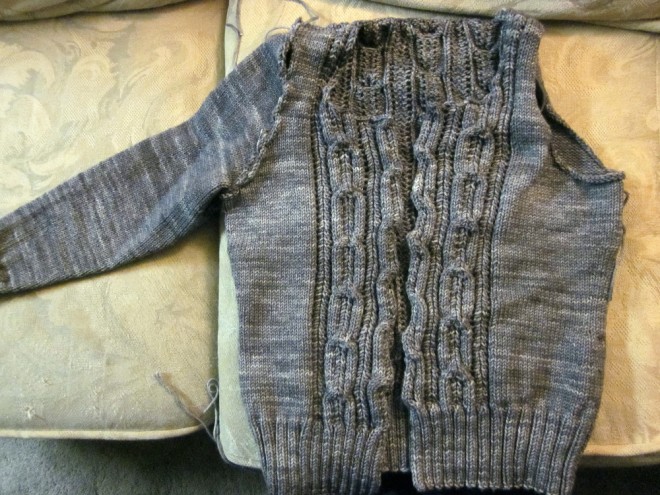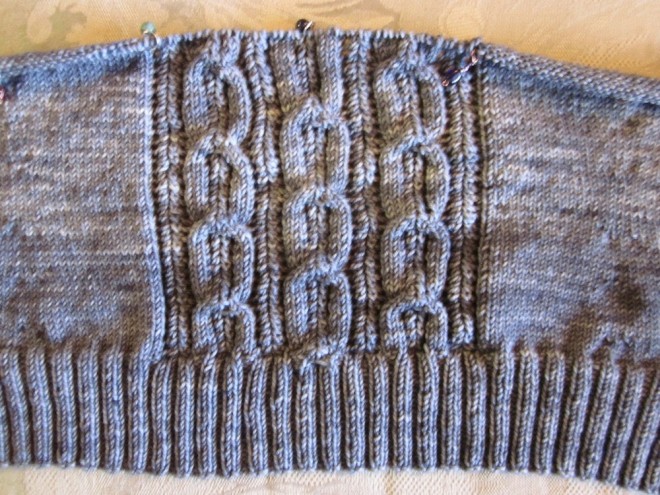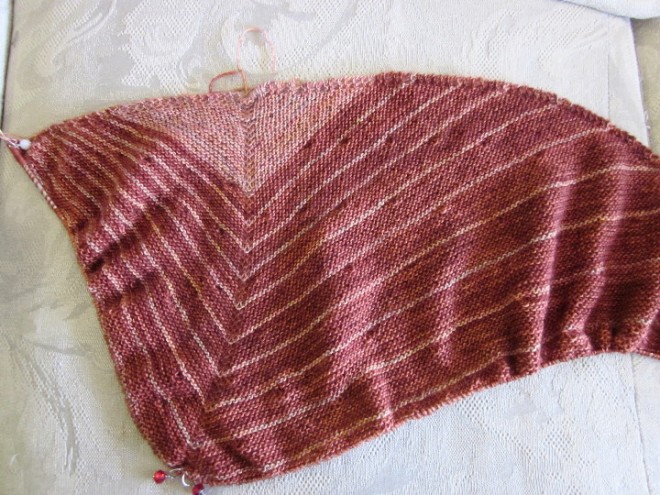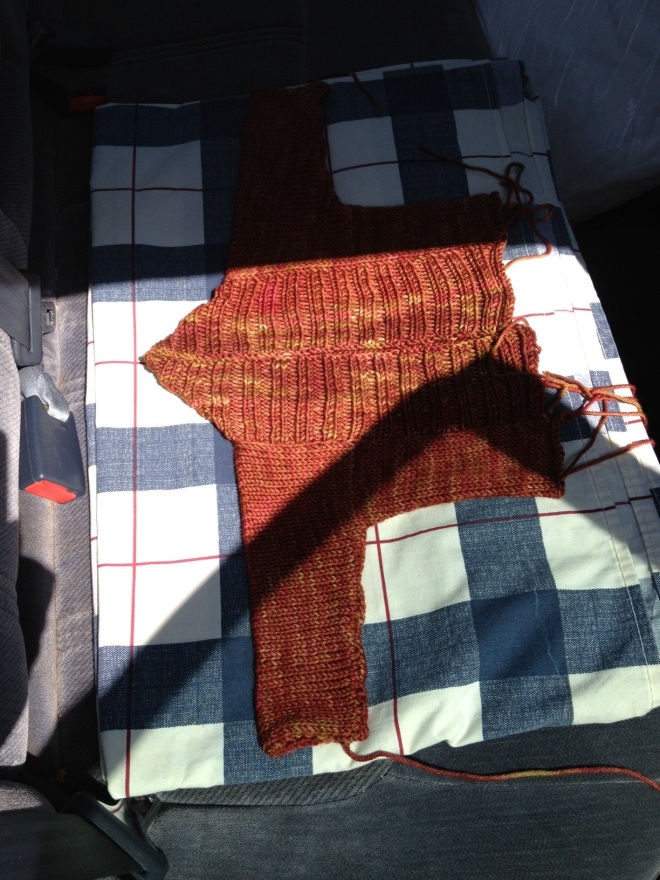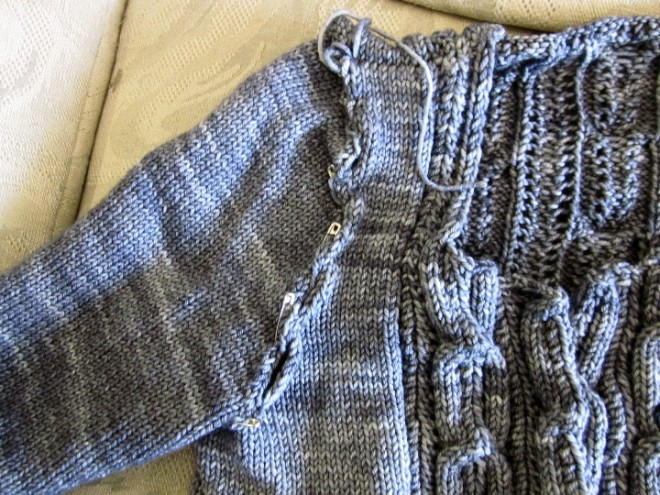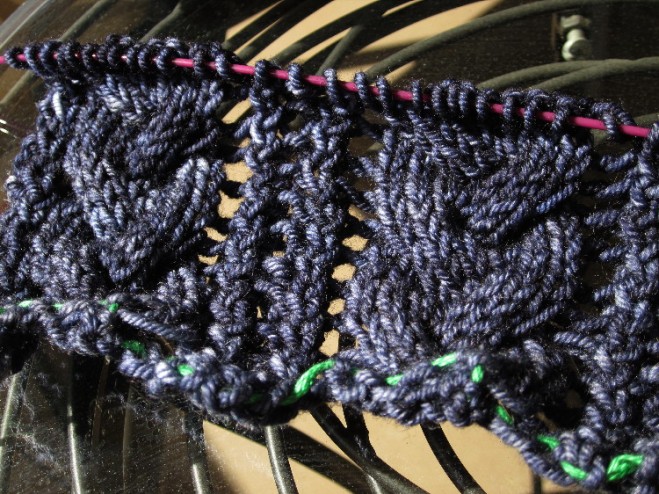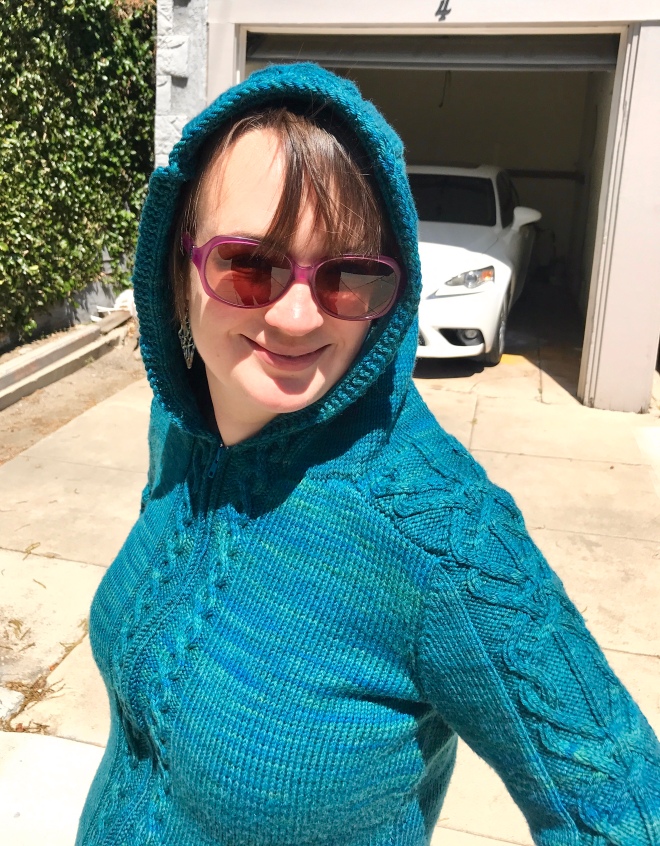
Hi friends! Now that the school year is over, I finally have time to fill you in on the knitting I’ve been doing. I have a large backlog of projects from this school year to share with you, but first: THIS AMAZING HOODIE THAT I FINISHED JUST A FEW DAYS AGO. Observe its full majesty:

The pattern is Granville by Fiona Ellis, from the winter 2012 issue of Twist Collective. (Holy cow, I’m just now seeing that Twist Collective has shut down! Sadness! You can still get all their patterns on Ravelry, though.) I made a few modifications, the main one being that the pattern calls for the large cable motif to be used only sparingly on the back, and I was like “fuck it, I want it ALL OVER EVERYWHERE.” Observe the pattern photos, where Fiona uses the narrow cable for most of the back:
Moderation has never really been my jam, and I stand by my decision. I also added 3.5 inches of length to the bottom because some people on Ravelry complained that it was too short, and I have a long torso. (It’s knit bottom-up, so I knit for 7 inches instead of 4.5 before starting the waist shaping.) I think the length came out pretty perfect, also:

I also, obviously, used a different colorway, but I used the yarn the pattern called for (Sweet Georgia Superwash Worsted). And now here’s the funny (more like tragic, frustrating, embarrassing) part: I have been knitting this since October or November, and very little else, because I had to knit it about 2.5 times before it came out right. I knit my swatch on the size 7 needles the pattern called for, dutifully blocked it, and found it a teeny tiny smidge large, but I figured that would be fine. I knit both fronts, the back including the hood extension, and when I started on the first sleeve, I could immediately see there was a problem: it was huge! It was going to be super baggy! But it was Christmas, and I was traveling, so I soldiered on until I could get home and block the pieces I had to check their measurements. Fun surprise: I was looking at nearly EIGHT ADDITIONAL INCHES of width in the body. I know that superwash yarn grows during blocking, but I thought blocking my swatch had accounted for that, but in fact I had just knit over 3/4 of the sweater with my gauge tragically off. For comparison, here is part of the old back layered on top of the current sweater:

Bonkers, right?? Look at the difference in the sizes of the cables!! So I switched to size 6 needles and knit the two fronts again, and realized they were still too big. So I went down to 4s, and knit the whole thing over again from the start. The right choice may have been 5s, since this is still a smidge tighter than I’d like, but IT’S FINE NOW. IT’S FINE. I’ve never in my life had my gauge be so far off; about 50% of the time it’s spot on, and about 50% of the time I have to go down a needle size. I’ve never had to go down three!
So, lesson learned: CHECK MEASUREMENTS AS YOU GO, FOR GOD’S SAKE. And when knitting a sweater in multiple pieces, consider blocking the first piece before you go any further!




